Includes per person per night:
- Overnight accommodation
- Buffet
4.51412942997412 of 5 Stars
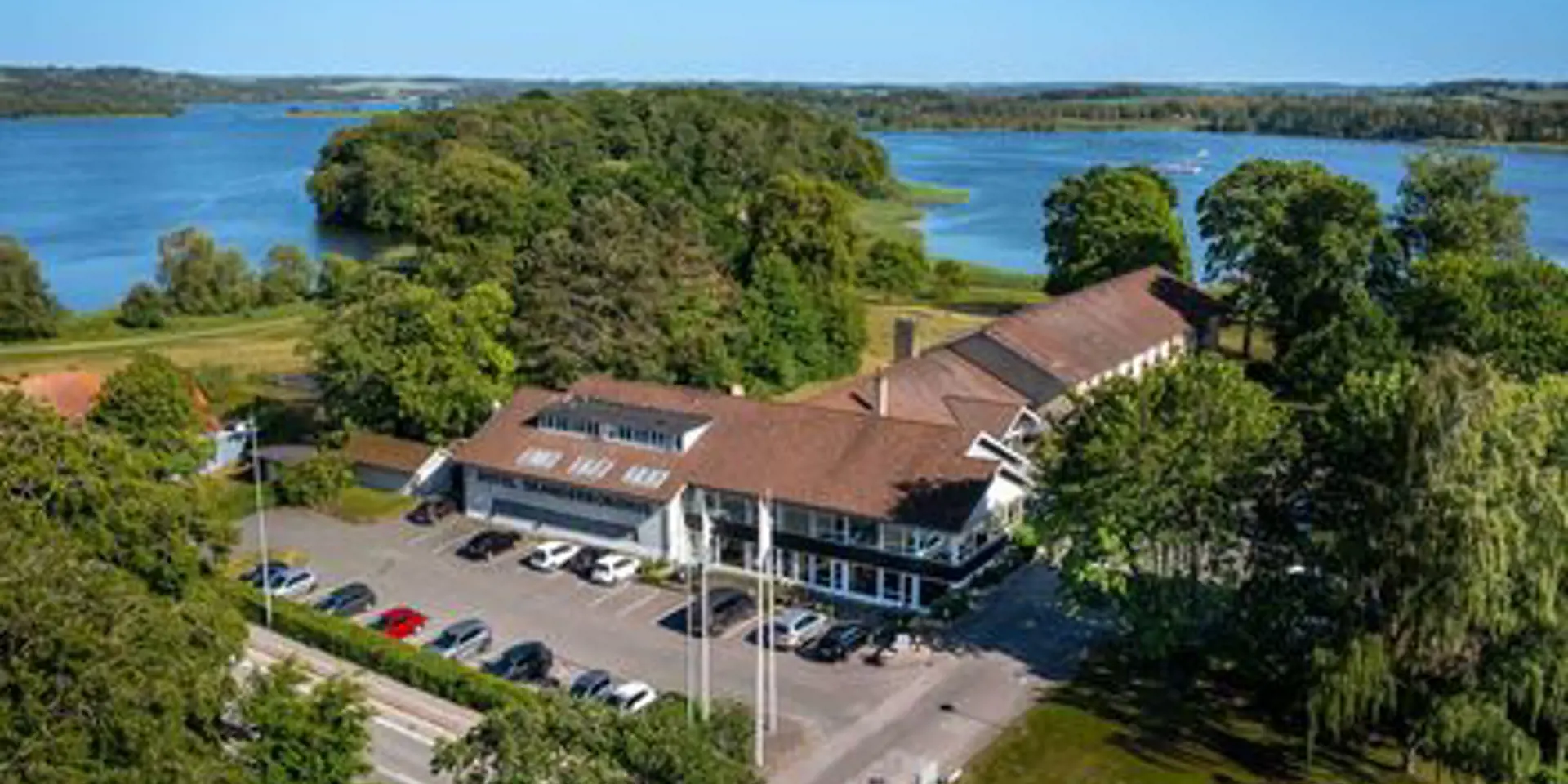
Includes per person per night:
Click the "See calendar and prices" button to choose dates and see the room selection.
See calendar and prices: Super StayDyrehaven 3, 8660 Skanderborg
Show map
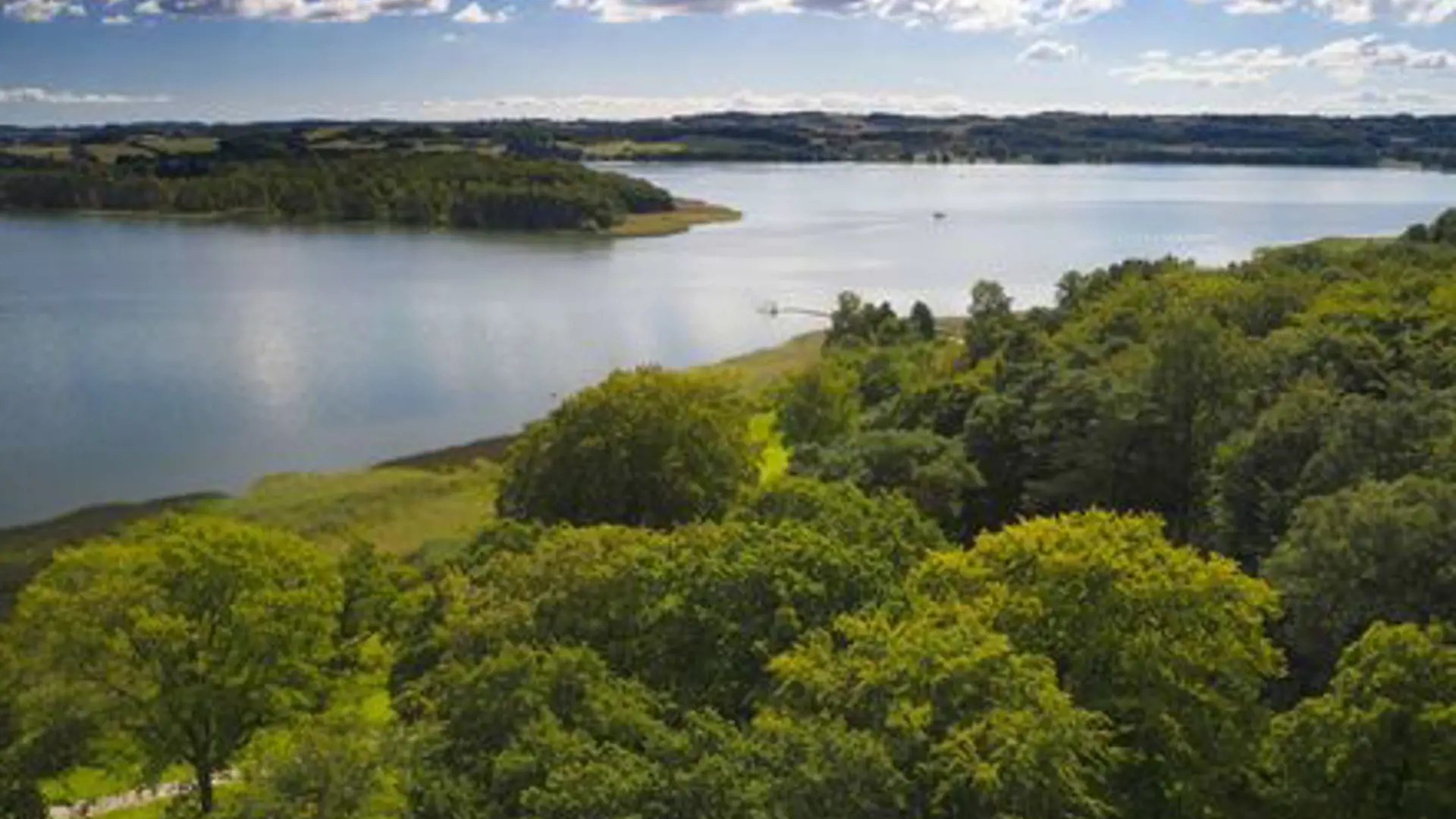
Includes per person per stay:
Friday:
Saturday:
Sunday:
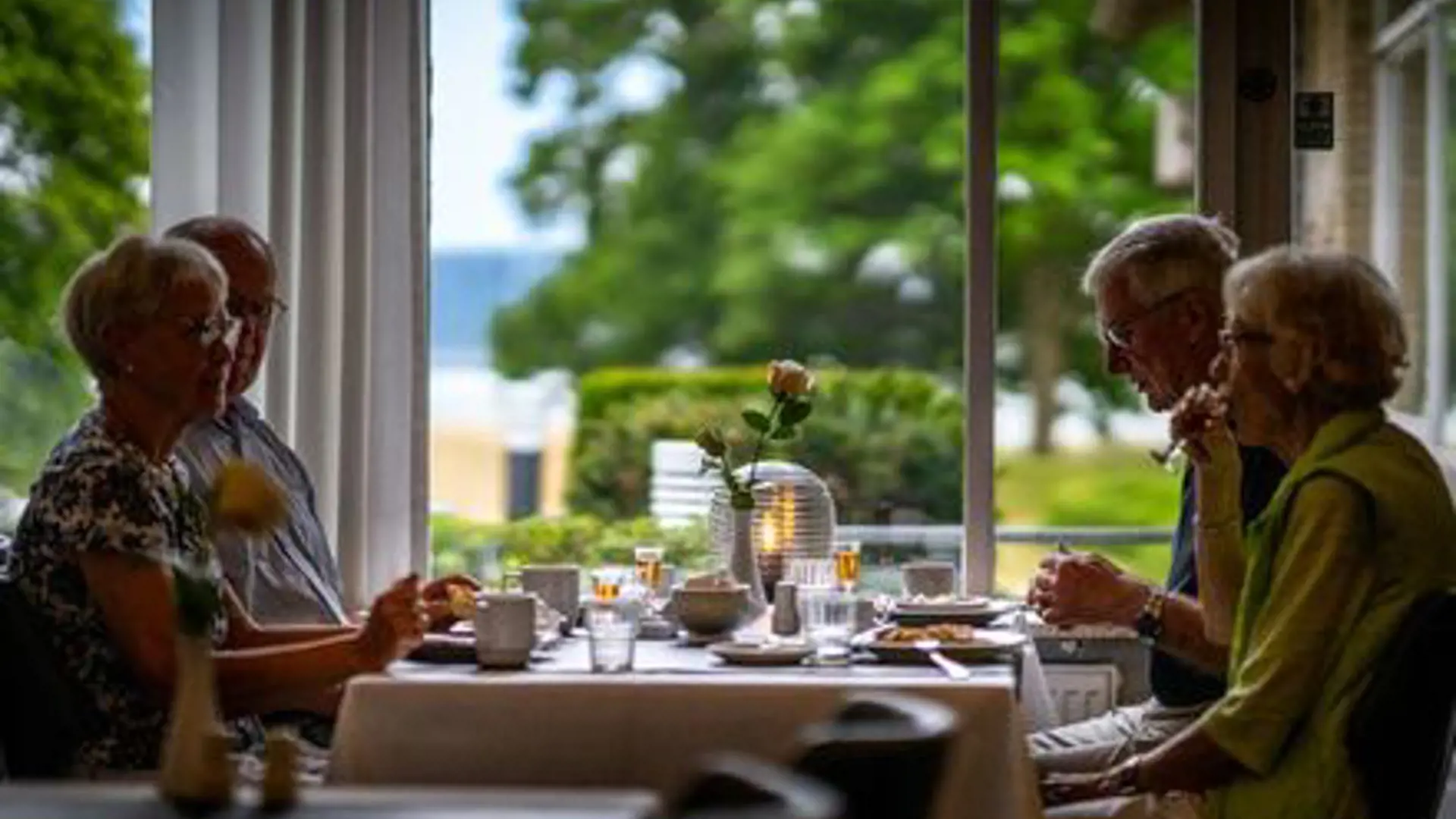
Includes per person per night:
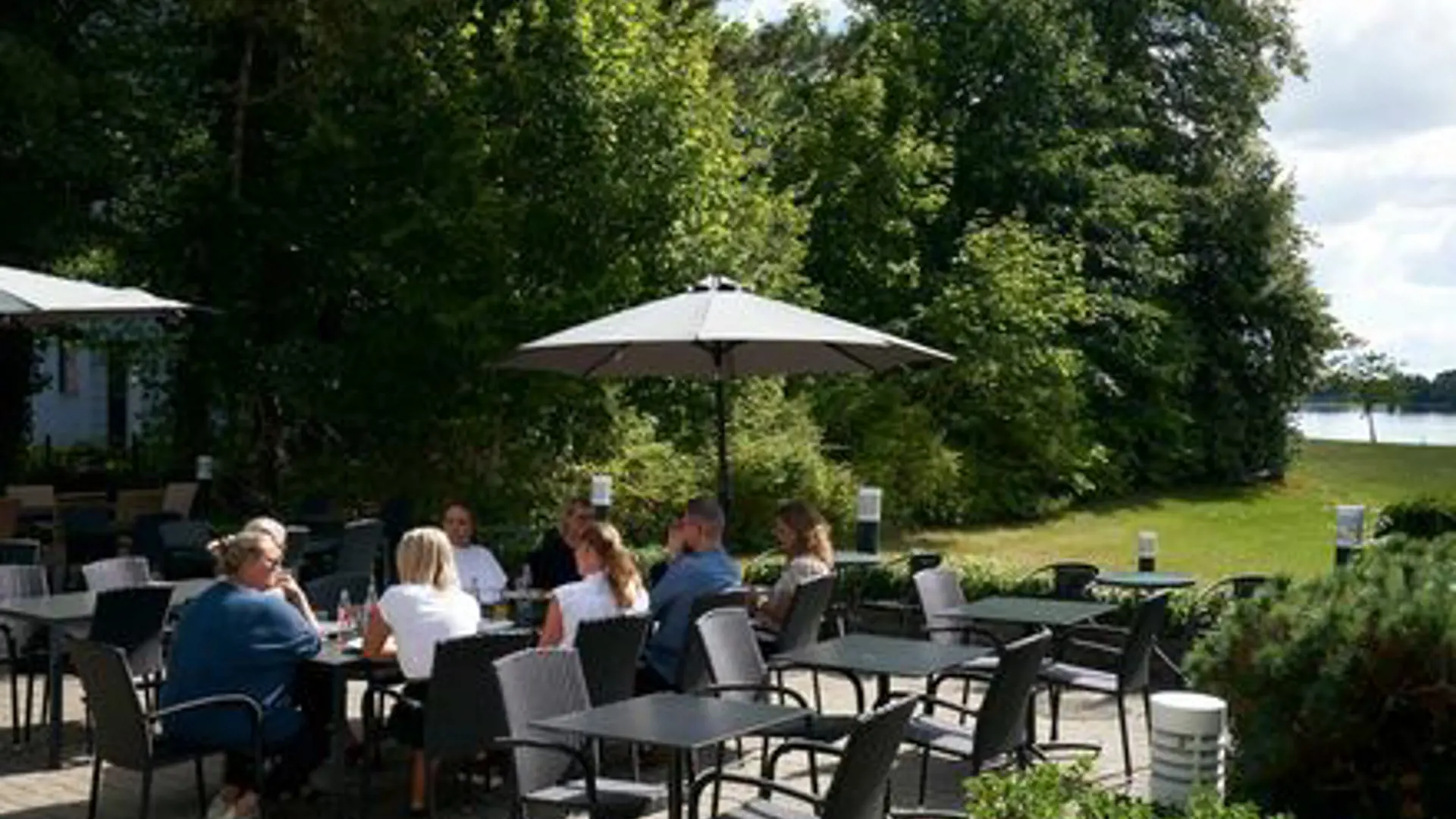
Includes per person per stay:
Thursday:
Friday:
Saturday:
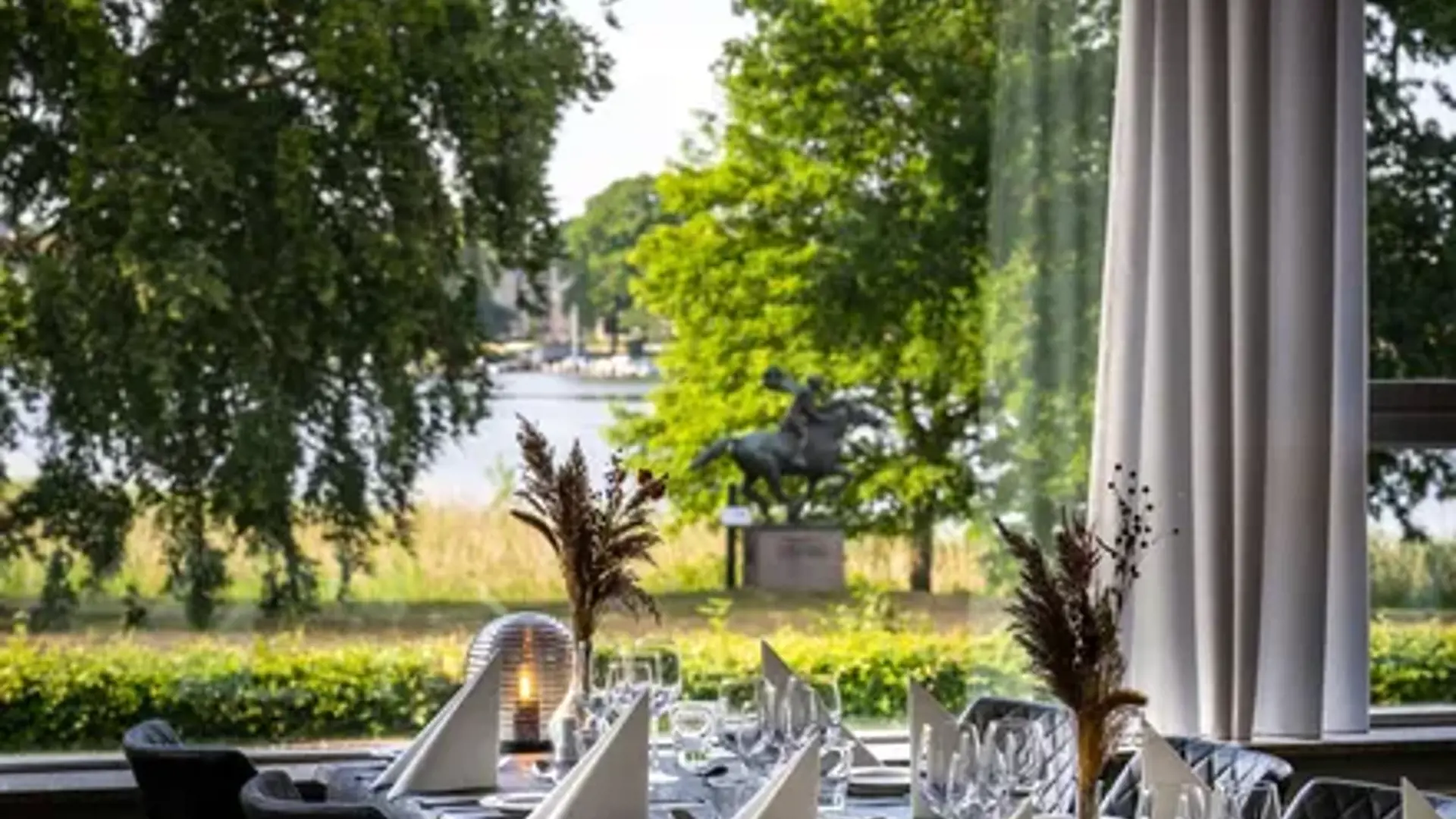
Minimum 3 days / 2 nights
Includes per person per night:
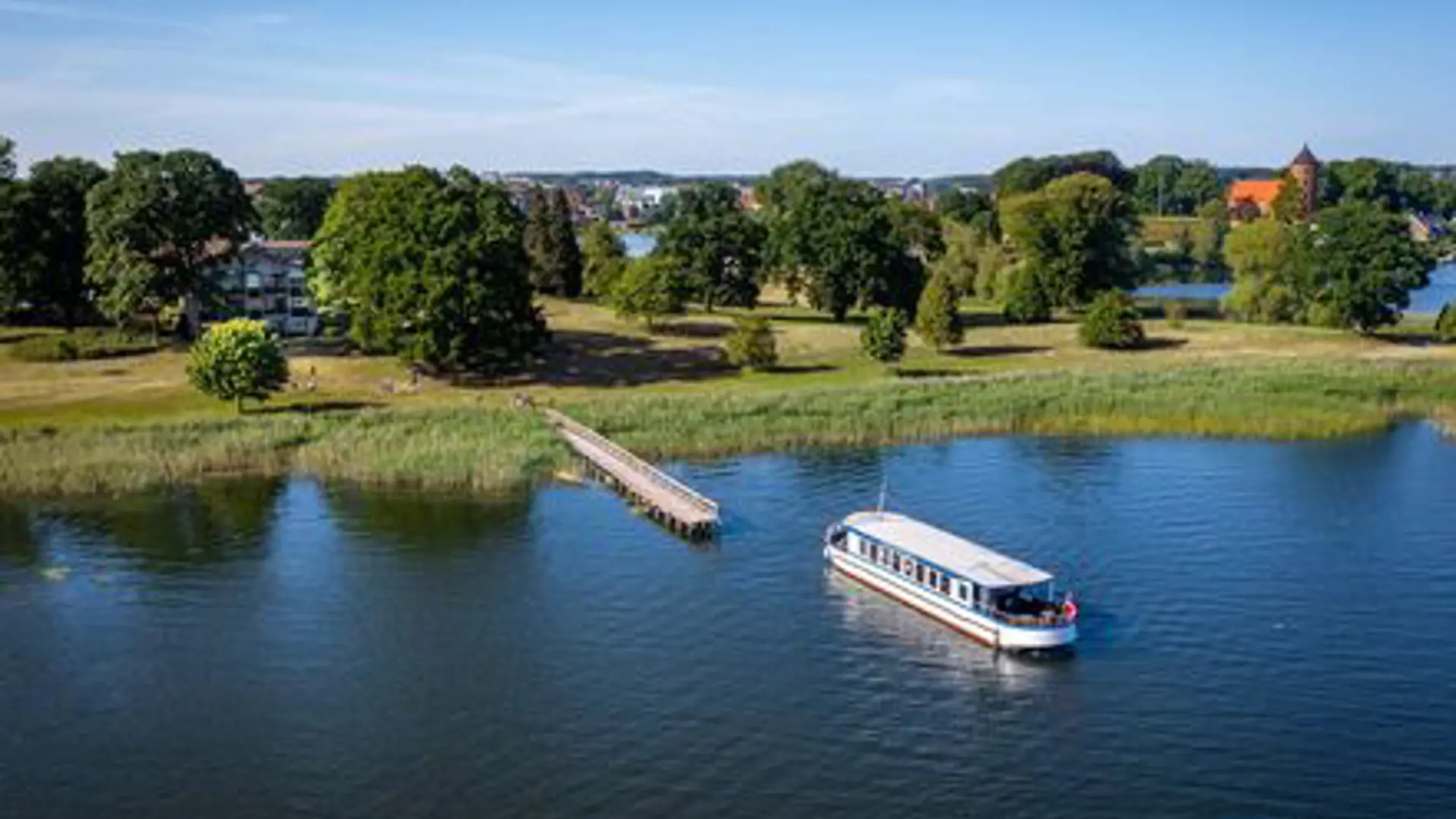
Includes per person per night:
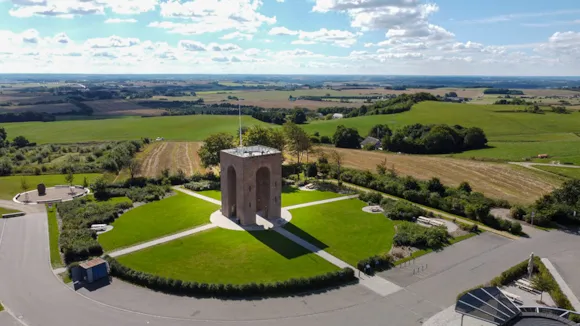
8.19 km
From the top of Ejer Bavnehøj is a magnificent view over a unique moraine landscape developed in the latter part of third ice age. Here the ice borderline of the east of Jutland is very clear. The ice flowed around the high plateau of Ejer. In bright weather it's possible to see the island of Samsø, and even the bridge over Lillebælt 50 kilometres away.
Until 1847 people thought that Himmelbjerget ("Sky Mountain") was the highest point in Denmark, but it's only 147 metres above sea. At that time Ejer Baunehøj was declared to be higher, and in 1874 it was measured to be 170.95 metres above sea level. Nevertheless Yding Skovhøj, only 3 kilometres away, was declared to be even higher, due to several new measurements in the middle of the 1900's. This was a great disappointment for people involved in Ejer Baunehøj.
The Danish authorities finally decided in 1953 that a burial mound on Yding Skovhøj from the bronze age didn't count. That reduced Yding Skovhøj to 170.89 metres, and means that Ejer Baunehøj wins this height competition by only 6 centimetres!In 2002 the heights were adjusted due to the new general measure method DVR90. Ejer Baunehøj has sunk 6 centimetres to now 170.89 metres, but the same applies to Yding Skovhøj measured at 170.83 metres.
Nevertheless, the battle of heights took a dramatic turn in February 2005. A panel of experts selected as referees in the battle proclaimed their winner. The panel, made up of a geography professor, an archaeologist, and an office head at Denmark’s National Geographical Survey, determined that Denmark’s highest point, measuring in at a height of 170.86 metres is Møllehøj (Mill Top).
The winner came in exactly nine centimetres higher than the second highest point, Rodebuske in Yding Skov, and 51 centimetres higher than the third highest, Ejer Bavnehøj. But Møllehøj is located only 200 metres west of Ejer Bavnehøj on an ordinary field belonging to a farmer. There is only a minor slope between the two tops. According to the international principle of primary factors they are defined as one complete top.
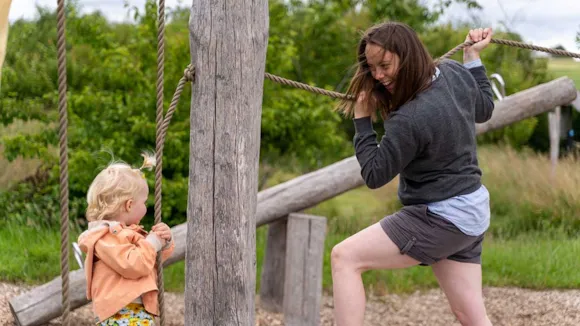
8.84 km
We all love a good story. Would you like to be the main character of that story? As you make your way through this forest you can take part in the story by scanning QR-codes or by activating sensors with light and sound. Maybe the fairies are to blame. It is told that:
”One day at the dawn of time, God threw all the evil angels out of Heaven and down to Earth. The angels had sinned against God, but they could not all make it to Hell. They, therefore, fell down to earth in different places. Some fell onto farms and became farm dwellers – in other words nisse. Some fell on mounds and hills, and became mountain folk, gnomes or trolls. Those who fell in the sea became sea people. And finally, those who fell into bogs, upon meadows and in woods became elves or fairies”. BASED UPON THE LEGEND FROM KVÆRNDRUP, EVALD TANG KRISTENSEN DANISH LEGENDS, VOLUME 1, S. 3, 1.1
Come and learn more about the fun, mysterious and exciting legends and fairytales
Admission: 50 DKK per person. Children less than one year old can enter for free.
Feel free to contact the Fairytale Forest if you are interested in using the facilities for a children’s birthday party or booking a witch or a troll for your party.
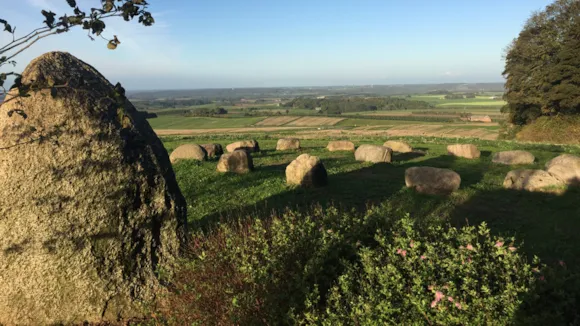
9.11 km
The area called Ejer Mountains is characterized by idyllic villages dotted between forests and farmland, connected by narrow, winding roads in undulating countryside. The area is a good place for a bicycle ride, and you are guaranteed a sweaty brow.
Up here in the thin air, you will pass Denmark’s highest points. The top of Yding Skovhøj is found at an altitude of 172,54 metres above sea level. When you are on your bike the hill rises 85 metres from the bottom to the top, but if you want to reach the summit, you will have to get off the iron horse and enter Yding Forest. From here you go for a hefty but short climb to the summit where Denmark’s highest point awaits.
It has been widely discussed over the centuries. What is actually Denmark's highest point? Over time, several different points have held the title but, as the means of measurement have become more precise, it is now possible to measure heights down to a one-centimetre accuracy. So, today there should be no doubt, right?
In fact, discussions are still ongoing as to which hilltop should hold the honourable title. There are several hilltops in the uplands north of Horsens the height of which vary by only a few centimetres.
There are three Bronze Age burial mounds at the top of Yding Skovhøj. The top of the centre one measures 172.54 metres above sea level. This is more than 1 metre higher than Denmark’s second-highest point. Critics argue, however, that the Bronze Age burial mounds are man-made and, therefore, not natural. According to this approach, they should not be included in the measurement.
In that case, Yding Skovhøj is a mere 9 centimetres short of the title of the highest point of our kingdom. In other words, whether Yding Skovhøj deserves the honourable title is a subjective assessment.
What do you think?
Yding Skovhøj is located in the southern outskirts of the Danish Lakelands, very close to the river Gudenå.
Not far from here is the Sugar Loaf (Sukkertoppen). The Sugar Loaf is a hill that - because of its height of a mere 105 metres - is dwarfed by Yding Skovhøj. However, the views are magnificent and among the absolute best in Denmark. From the top you have views of the most beautiful part of the Gudenå area which is the area around Mossø. At the base of the Sugar Loaf, you find the idyllic Klostermølle which, besides the historic buildings – including Denmark's longest wooden building, has a beautiful view at the end of Mossø.
And you are only about five kilometres from the Uncovered Bridge (Den Genfundne Bro) – a culturehistoric gem in beautiful nature, and the biggest attraction in the area.
Follow this link to find breath-taking views in the Coastal Land.
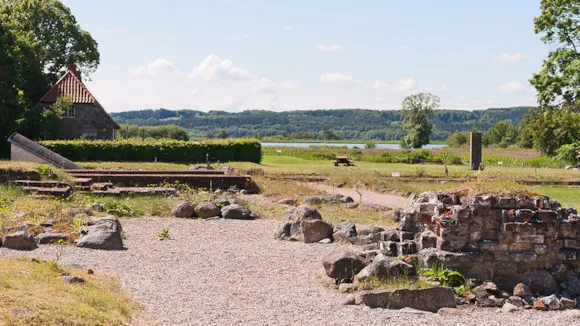
11.52 km
The museum is situated on the ruins of the demolished abbey. A walk through the abbey ruins gives insight into the life in the abbey during the medieval period, and you can experience five original graves that are on display, including Bishop Peder Elafsen of Århus, who was buried in the abbey church in 1246 and abbot Mikkel in the Chapter room in 1246.
In the museum, you will find the exhibition "Pray and Work", which covers the daily life of the monastery. The story is told through many objects and skeletons found during the excavations on the site, including a reconstruction of the open tomb of the bishop.
A monastic garden contains 80 different cultivated plants on display. The plants were used as medicinal and edible herbs or were otherwise used in the household during the medieval period. In the brewery, garden plants like hops, sweet gale, malting barley can be experienced.
The museums shop has a variety of books, beers from the Kloster brewery and souvenirs.
Audio guides in English are provided for free.

16 km
The Uncovered Bridge is a cultural-historical gem and a piece of revived Danish history that lay hidden inside a dam for 85 years. In 2014, the bridge was uncovered and restored to its former glory and, today, the bridge is a magnificent sight and an even better experience to walk across.
With good parking opportunities near the bridge that crosses the rushing Gudenåen, The Uncovered Bridge is an obvious destination for a picnic that can be enjoyed at tables and benches by the bridge.
Today, the bridge is a symbol of beautiful, industrial engineering, after it was thoroughly restored in 2014. When it was built, the red steel lattice bridge was the tallest of its kind in the Nordic region and, today, railings and planks to walk on have been added to allow visitors to enjoy the view of Denmark's only “river”, Gudenåen.
- 13.4 metres high
- 50 metres long
- Built in 1899
- Covered up in 1929
- Uncovered in 2014
The Uncovered Bridge is located 20 kilometres north of Horsens between the villages Vestbirk, Træden and Gammelstrup. About 300 metres from the bridge, there is a large parking lot at Vestbirkvej 2A, Brædstrup. From here, a path leads to the bridge.
If you are taking a canoe trip on Gudenåen, The Uncovered Bridge is an obvious place for a rest and enjoying the magnificent nature in the area. There is a natural place to land the canoe at Vestbirk Hydropower Plant and it is not far from there to The Uncovered Bridge.
A ford has been established for visitors on horseback immediately east of the bridge.
The Uncovered Bridge is part of the beautiful, old Bryrup railway line which has now been turned into the Horsens-Silkeborg Nature Trail. The 61-kilometre route is mostly paved and without motorised traffic and is, thus, perfect for day trips on your bicycle. The picturesque trip through the hilly Bakkelandet and Søhøjlandet can be divided into two days as there are several possibilities of overnight accommodation along the way. The route is also popular with hikers and as a riding trail.
On this page you can find find inspiration for experiences near the Uncovered Bridge.
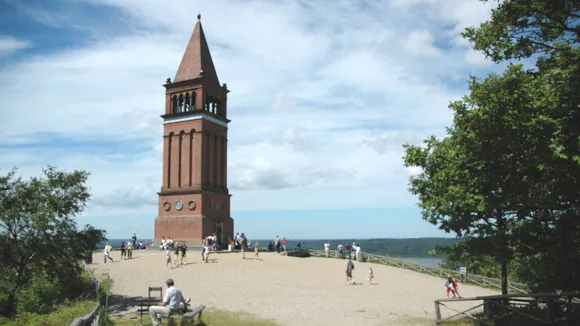
17.36 km
Himmelbjerg Tower, which is 25 m high, was erected as a memorial to King Frederik VII, who on June 5, 1849 gave the Danish people their free constitution.
The tower, designed by architect L.P. Fenger, bears a frieze with the inscription: "In memory of the King - Frederik d. 7 - the friend of the Danish people - giver of the constitution".
Construction work began in 1874 and on June 5, 1875 the tower was "unveiled". However, a part of the decoration was missing, namely the portrait of the king and the memorial wreaths, executed by sculptor Ring. These decorations were unveiled at a constitutional festival in 1891. Since then, nothing has changed in the appearance of the tower.
Price: 10 DKK per person. Tickets can be purchased at the tower. The admission fee for Himmelbjerg Tower is used for the maintenance of the area.
See here for the tower's opening hours.
You can choose to sail with the excursion boats from the ports in Ry or Silkeborg, or you can hike the 7 km from Ry through the beautiful forest to the foot of the Sky Mountain Himmelbjerget.
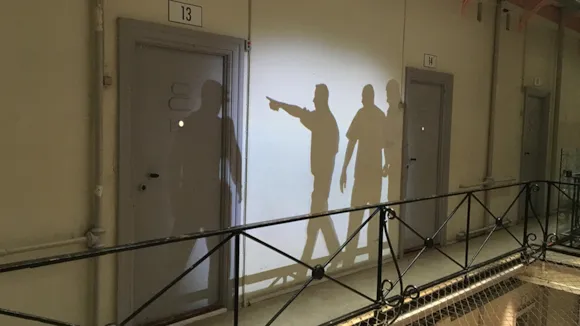
17.83 km
The walls of the old Horsens State Penitentiary could tell many violent, fantastic and fascinating stories. As a guest at the museum, you are guaranteed to have a unique, thoughtful and memorable experience you will never forget.
As soon as you enter Europe's largest prison museum, all your senses are brought into play. The exhibitions offer experiences that can be seen, heard and smelt. Precisely for this reason, a tour of the fantastic building is a great experience for both children and adults. And this is why the museum has repeatedly won awards for its exciting exhibitions. You are given the exceptional opportunity to get behind bars and meet former inmates as shadows on the walls. Life in the PRISON and the story of the Danish prison system are also told through the use of screens, telephones and intercoms.
On the walls, doors and closets, you can read the sometimes vehement, sometimes humorous messages from the inmates painted or drawn as an eternal reminder of their time in the state penitentiary. Together with the digital tools, they help to tell the authentic story of life behind bars.
Experience the impressive, 18-metre-long tunnel by escapee Carl August Lorentzen that led from his cell to freedom. Digging such a tunnel required an enormous amount of hard work, dedication and perseverance. The inspiring story of Lorentzen was then on everyone's lips and it taught the Danish people that "Where there is a will, there is also a way".
The underworld - this is what the prison museum calls its most recent exhibition which can be viewed in the old dungeons. The dark cellar was once used for punishing, executing and disciplining the inmates and this is your chance to see the gloomier side of the prison with its painful tools for punishment.
Learn about Horsens State Penitentiary's role during World War II. And get to know Werner Best - the leader of the German Armed Forces who was sentenced to death after the war and served time in Horsens.
See where and how inmates sentenced to death were executed in the early days of the prison in the 19th century. And how did you go about things when inmates got married and wanted romance?
The Prison Museum is filled with captivating tales. But do not worry, the prison no longer holds inmates. So, unlike the great escapee Carl Lorentzen who always dreamt of freedom and thus dug his way out of the Horsens State Penitentiary, you are free to leave again.
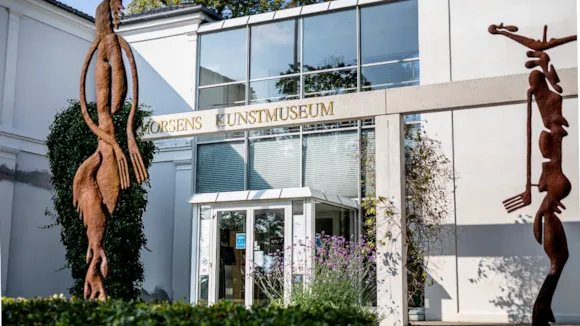
18.48 km
The beautiful and striking building housing Horsens Art Museum is located at the top of the park Caroline Amalie Lund whose beauty draws you in.
The focal point of the museum is contemporary Danish art and its collection gives you an insight into what is happening within Danish art. The collection includes works by major new Danish artists and has an experimental character ranging from the beautiful to the grotesque and through-provoking. The works give rise to dialogue, wonder and reflection.
So take your family and talk about art, beauty, life and society while touring the bright and welcoming galleries.
Experience vast collections of e.g. the following artists:
One of the central artists of the museum is the Horsens-born Michael Kvium, whose art has a whole gallery dedicated to it. The museum’s large collection of works is continuously rotated, so that you experience something new every time you visit. Kvium’s grotesque, fascinating and sometimes repulsive representation of the human body has made him one of the country’s most significant and popular visual artists. Kvium’s art parts the waters.
Every year, Horsens Art Museum presents two special exhibitions as well as a number of smaller exhibitions of invited artists and the museums own vast collection. Why not by a year pass? That way, you can experience it all.
You can take the entire family to the museum, including the children who can explore the art on their own terms. The museum has endeavoured to also create material for the youngest target group.
Every year, Horsens Art Museum organises a number of concerts, events and talks for both adults and children. By way of example you can go detecting or go on a city walk and explore the street art.
You are also welcome to use the art museum as a living room. Read one of the many exciting books from the shop that has a selection of art supplies and gift ideas.
In the park surrounding the museum, the Caroline Amalie Lund, you find several interesting sculptures. Have a look at Bjørn Nørgaard’s main work The Human Wall (DK: Menneskemuren) and Christian Lemmerz’ Gestalt (Todesfigur). Combiner your visit to the museum with a walk through the cosy park which is a popular oasis amongst local residents and guests alike. Here, you also find a playground and Horsens Museum which you can visit for free.
Experience four museums in Horsens with just one ticket.
The Museum Pass gives you seven days’ access to FÆNGSLET, Denmark’s Industrial Museum, Horsens Art Museum and Horsens Museum. With the Museum Pass in hand, you can look forward to lots of exciting experiences and stories – and then you save money on entrance fees and also get two cups of coffee or tea.
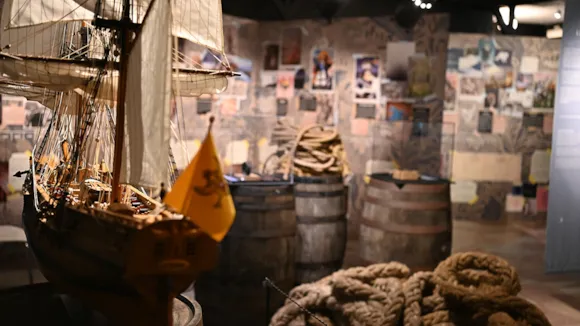
18.56 km
Horsens is an old city with a proud and exciting history. When you walk through the old city center and see the old buildings and relics of the past, you will get to experience this. When you visit the city, you ought to make a visit to the park Caroline Amalie Lund, where the museum has had is residence since 1915. You can see exciting and varied exhibitions, giving you a better perception of the city from the ancient past until the present.
Did you know that Russian royalty have lived in Horsens? What must it have been like to live in Horsens during the occupation? And who were the wealthy merchants behind the beautiful mansions? In this exhibit, you can learn more about the last three centuries, where Horsens was in rapid development.
The many burial mounds- and chambers, testify to the fact that humans have been living here for many thousands of years. Through archaeological excavations, the museum has collected an impressive collection with thousands of prehistoric finds, that provide a view into the devolvement of society and lifestyle trough 10.000 years.
Vitus Bering - one of the world’s greatest explorers. The man behind the largest expedition in history, with more than 10.000 people. He has an ocean named after him – and yes, he was born and raised in Horsens. Come and discover the interesting history of the how the boy from Horsens became a folk hero in Russia.
Horsens regularly arranges events like city walks, guided tours and lectures. At the interesting thematic city walks, you will walk around town and be taught more about the exiting history of Horsens.
Most tours are in Danish, but we offer expert tour guides on a tour of the Prison Museum, where you get a unique behind-the-scenes insight in prison life in Denmark in the past 153 years.
Get an overview of all tours including the tour of the Prison Museum.
Horsens Museum is in the beautiful building from 1915, designed by the local architect Viggo Norn, the man behind many of the buildings which are distinctive and worthy of preservation in Horsens. The museum is placed in the park Caroline Amalie Lund which to this day, is still a popular hang-out spot for the residents in Horsens. In the park there is a nice playground, as well as many beautiful sculptures. It is also where you will find Horsens Art Museum, so why not get a day out of it and combine the visits at the two museums with a picnic at the park.
Experience 4 museums in Horsens with just one ticket: The Museum Pass gives you 7 days access to FÆNGSLET, Denmark's Industrial Museum, Horsens Art Museum and Horsens Museum.
Remember to check opening hours on the individual museum's website before your visit, as some of the museums are closed on Mondays outside the high season.
You can buy the Museum Pass at the entrance to one of the four museums or you can book your Museum Pass online here >
If you book online, choose the date you want to start using the pass. Remember to print your ticket before going to the museums.
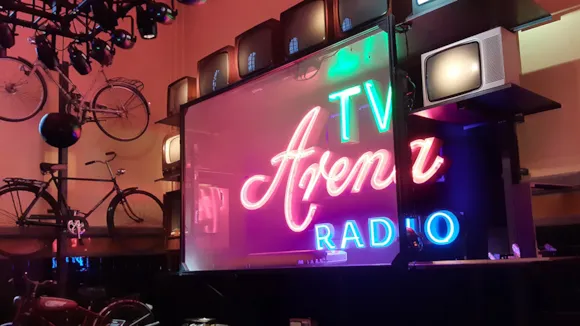
18.86 km
If not, then you can smell and experience it in authentic surroundings it at the Industrial Museum. The Industrial Museum gives you the amazing story about how the industrialization shaped our society and the way we live. It is for everyone and you can experience all of life’s stages.
As soon as you enter the museum, you can feel it: You have stepped back in time and now it is easy to get an impression of what life was like for your parents, your grandparents and their parents.
Then there is nothing to worry about because this is heaven for curious fingers! At the Industrial Museum, there is room for play, and if you follow the footprints going through the buildings, you will be sure to experience it all.
You will visit the assembly line, where you can compete and see who is fastest at assembling ball bearings. Enter the worker’s living quarters with apartments from different decades in the 20th Century. Step inside the old stores at the shopping street. Observe the impressive machines the plant room.
And how about visiting the old school, the textile factory, or the packaging printing factory? At the Industrial Museum you can learn about the old crafts, communicated in an exciting way. And you are allowed to touch!
In this new playful exhibition at children’s level has workbenches, toolboxes, children’s boiler suits, and an authentic workshop atmosphere from bygone times.
Someone has disassembled a Puch Maxi from 1973, and the museum do not know how to assemble it again. They need help from curious kids asap!
Experience 4 museums in Horsens with just one ticket: The Museum Pass gives you 7 days access to FÆNGSLET, the Industrial Museum, Horsens Art Museum and Horsens Museum.
You can look forward to lots of exciting experiences and stories. With the museum pass, you save money on the entrance fee and also get two cups of coffee or tea.
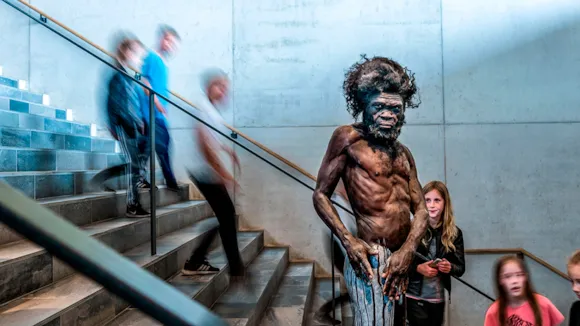
19.42 km
Prehistory presented innovatively in a breathtaking architectural setting makes for a world-class museum experience when you visit the Moesgaard Museum. The past becomes alive and the people in the exhibits will step forward and provide the visitors with a better understanding of the past and how we arrived at where we are in the present.
The Moesgaard Museum is a huge attraction not only because of the architectural design of the museum and the exhibitions, but also due to its location in the beautiful natural surroundings in south of Aarhus, overlooking the woods and sea.
The evolutionary stairway at Moesgaard Museum is not only a key element of the architecture, which leads to the various exhibitions of the museum, it is also very much an opportunity for you to see where we human beings originate from.
On the stairs you will see seven hominins. They were members of the tribe Hominini, which means ”human species”, but they don't all look like the modern human being.
Read more about the evolutionary stairway
Due to the unique conditions in the peat bog, the body was exceptionally well preserved, even after being deposited in the bog for more than 2,000 years. For example, you can still see the finger nails, the toe nails and hair on the body.
Read more about the Grauballe Man
Staged settings, dramatized storytelling, and state-of-the-art research all combine to make the exhibitions at the new museum appeal to visitors of all ages while also creating a sense of bonding, fellowship and shared experience across generations.
Moesgaard Museum has three Michelin stars in the Michelin attraction's guide.
The museum is closed on:
December 24th, 25th, 31st and January 1st.
#moesgaardmuseum #visitaarhus #visitaarhusregion
CHILDREN UNDER 18 YEARS: FREE ADMISSION
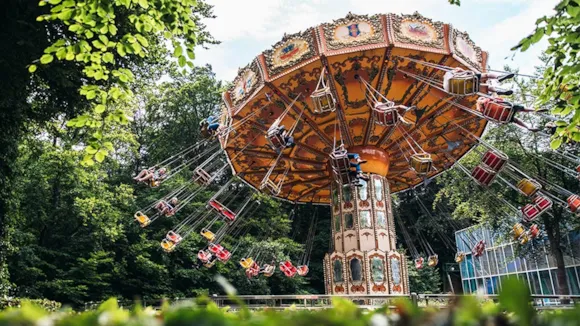
20.68 km
At Tivoli Friheden there is time and space for everyone. Time and space for fun. Time and space for music. And time and space for tradition.
Right in the heart of Aarhus, surrounded by beautiful nature, you will find the unique and historic park, which has been a respite and a haven for the city's citizens since 1904.
Whether it's summer, autumn or Christmas, you can look forward to an unforgettable experience at Tivoli Friheden. Tivoli Friheden is an amusement park that offers unforgettable experiences for the whole family.
Hjertekig is a 65-metre free fall tower and the highest in Denmark. The highly distinctive tower has changed the Aarhus skyline noticeably.
There are two ways that you can take the ‘jump’. The daring can take the free fall from the top and reach 5G acceleration. Or you can sit and enjoy the views while descending slowly and steadily, going round the tower all the way up and down.
If you are one of those who can't wait until the next adrenaline kick, then the Sky Tower at the Tivoli Friheden amusement park is exactly what you have been waiting for. This is certainly not for the faint-hearted. This is only for those with nerves of steel who are literally not afraid to leap into wild adventures.
Standing 40 meters above the ground, overlooking all of Aarhus, it is only the toughest of the tough who dare take the leap. Before you awaits the maddest free fall, where you reach a speed of up to 90 kilometres per hour before landing in the net. Only one question remains: Do you dare?
Get ready to spin and twirl if you want to try the new amusement 'Himmelrum'. The amusement allows you to defy gravity and forget time as it makes you feel alive!
Bille By (the city Bille) is an entire town for families with young children. Here you can take you very own driving license if you are between 5 and 8 years old and drive around in small electric cars. You can also take a breathtaking ride with "Bisværmen" which turns and twirls or try the ever-jumping Grasshopper. It is a blasts for the youngest ones!
And many other rides such as merry-go-rounds, air and boat swings, a Ferris wheel, roller coasters, ghost trains, free-fall towers and much more. Find out much more here.
Tivoli Friheden will be at the peak of its form during summer with very special concept gardens. The numerous activities cater to anyone regardless of age, and this makes the festival the perfect place for families to share an endless list of flower experiences.
There are restaurants to suit every taste and if you wish to bring your own picnic basket, there are BBQs and dining areas for this.